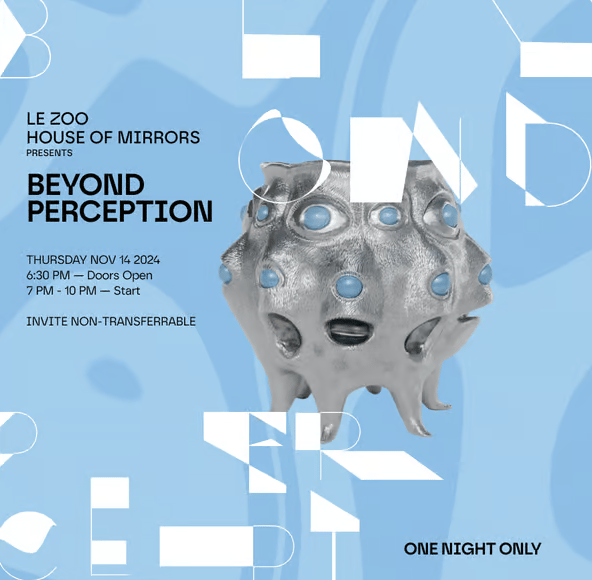- The Augmented Human
- Posts
- Did AI Avatars Really Replace Human Jobs at a Polish Radio Station?
Did AI Avatars Really Replace Human Jobs at a Polish Radio Station?
When Media Narratives Miss the Real Story about AI's Power to Augment

In this issue
Welcome to Issue #5 of The Augmented Human, your weekly dose of original thinking on the AI-enabled human. This week, I’m applying my framework for responsible AI avatars to the uproar over AI “hosts” supposedly taking over at a Polish radio station—or did they? My take below on what really happened and what this case reveals about AI’s place in creative work.
Did AI Avatars Really Replace Human Jobs at a Polish Radio Station?
Insights from last week’s NVIDIA Media & Entertainment Startups event in NYC
Goings-on, including - request an invite to a unique event in NYC next week: Beyond Perception.
Did AI Avatars Really Replace Human Jobs at a Polish Radio Station?
The headlines were alarming: a Polish radio station replaced its human hosts with AI-driven avatars, leading to public outcry and a 23,000-signature petition demanding the experiment's shutdown. It seemed to confirm our worst fears about AI replacing human jobs in creative fields. But like many narratives about AI disruption, the reality proves far more nuanced – and instructive.

Let's start with the actual facts: the show in question had been canceled months earlier in August due to "close to zero" listeners. The dozen contributors affected weren't full-time employees losing career-sustaining positions – the main host earned approximately $64 per episode while working primarily as a theater director. Rather than a case of AI replacing viable jobs, this was an attempt to breathe new life into an already defunct program by attracting younger audiences.
Having worked with tech media through Hour One since 2019, I've seen firsthand how responsible AI implementations often get overshadowed by sensationalist narratives about deepfakes and job displacement. This case perfectly illustrates why we need frameworks to evaluate AI projects beyond simple replacement narratives. As I discussed in my recent TEDx talk, we need clear guidelines for ethically-sourced avatars. Let me break this down using my framework, which emphasizes three key elements: control, transparency, and accountability.
When the show relaunched in October, it represented a fascinating human-AI collaboration. A team of human journalists worked with AI tools to craft dialogues and create an AI version of a deceased Nobel-winning poet. The poet's estate granted explicit permission for this use, seeing it as an opportunity to introduce her wit and wisdom to Gen Z audiences – a perfect example of control in action. While transparency could have been better (the show didn't initially disclose the AI nature of the hosts), the project maintained accountability by securing proper permissions, which would have satisfied even California's strict laws on digital replicas of deceased individuals.
The experiment achieved something remarkable: it attracted 8,000 listeners to an episode featuring an AI conversation with the poet – a significant audience for a show that previously had nearly zero engagement. This suggests that AI, when used thoughtfully, can augment rather than replace human creativity, opening up new possibilities for audience engagement and cultural preservation.
Ironically, if the goal was to spark debate about AI's role in creative fields, the experiment succeeded beyond expectations. It generated national and global conversations about the intersection of technology and creativity. Even as a PR move for a liquidating station, it achieved its objective of generating attention and engagement, albeit with unexpected backlash.
The case ultimately reveals two crucial insights about our relationship with AI. First, public sensitivity around AI and job replacement remains extremely high, demanding careful handling and transparent communication. Second, the media's tendency to favor simple, controversial narratives often obscures the nuanced ways AI can enhance rather than diminish human work.
What's needed isn't fearful rejection of AI in creative fields, but rather thoughtful frameworks for implementation that prioritize human agency and trust. When deployed responsibly, AI can help us create experiences that wouldn't be possible otherwise – not replacing human creativity, but extending its reach and impact in ways we're only beginning to explore.
Insights from NVIDIA's Media & Entertainment Startups Event
At NVIDIA’s Media & Entertainment event in NYC, it was inspiring to see how AI is tackling media’s longstanding challenges—attention, engagement, monetization, and measurement. Highlights included live event enhancements, AI-driven video management, and immersive, interactive content. My key takeaway? GenAI is creating real commercial value, especially in live experiences where demand for unique, premium content remains high. I break it down, with links to each of the AI startups here.
Beyond Perception: Request your invite
Two of the most creative people I know are hosting an exquisite event: Beyond Perception, at LUME Studios NYC next week.
Part I: Thursday Nov 14: an exclusive immersive design event featuring world class artists. You can request your invite here.
Part II: I have the great pleasure of moderating a discussion: Beyond Perception: Blurring Mediums featuring in the same space on Friday November 15 - followed by drinks! More details and RSVP here.
Quote of the Week
"With each technological evolution, people return to what is uniquely human—their hands. Being human is about sensuality, like how different materials make you feel."
Get in Touch
If you’re interested in exploring more at the intersection of AI and humanity - or discussing any of the thinking in this newsletter - you can reach me at [email protected] or simply respond to this email.


